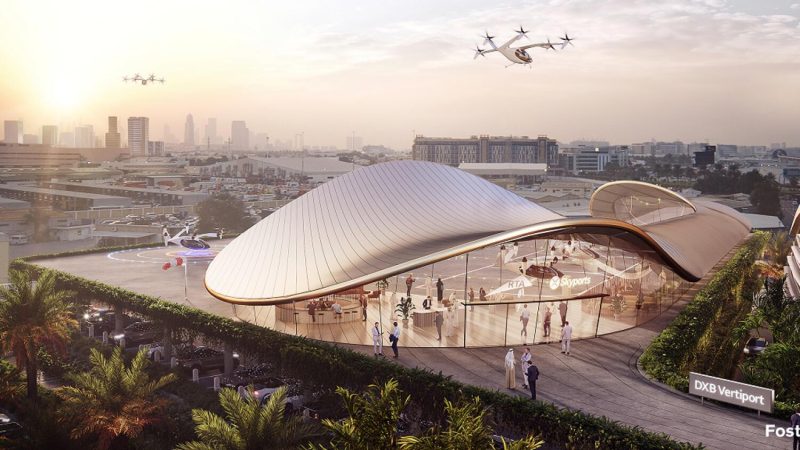
Look: Dubai’s Air Taxis Flying Near Burj Khalifa And Burj Al Arab
You will see air taxes in Dubai skies in as little as three years. By the year 2026, tourists and residents would queue up at one of four vertiports in the Emirate and whiz between Downtown Dubai near the Burj Khalifa area, Dubai International Airport, Palm Jumeirah, and Dubai Marina.
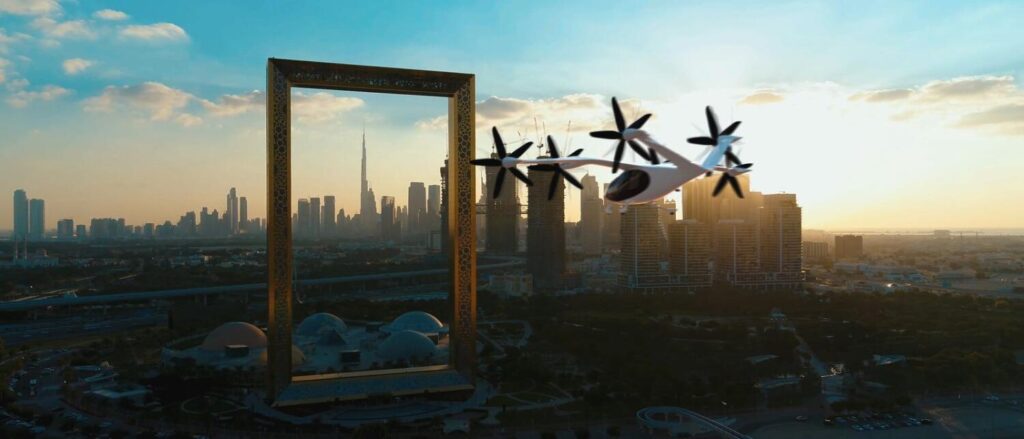
Released by the Government of Dubai Media Office late on Sunday, photos of the aerial taxi, the sights passengers will see, and the first vertiport are sure to get your heart racing and minds soaring!
Here Is The First Look Inside The First Vertiport
The first swanky vertiport will come up near the Dubai International Airport. The roof serves as the terminal for the aerial taxis:
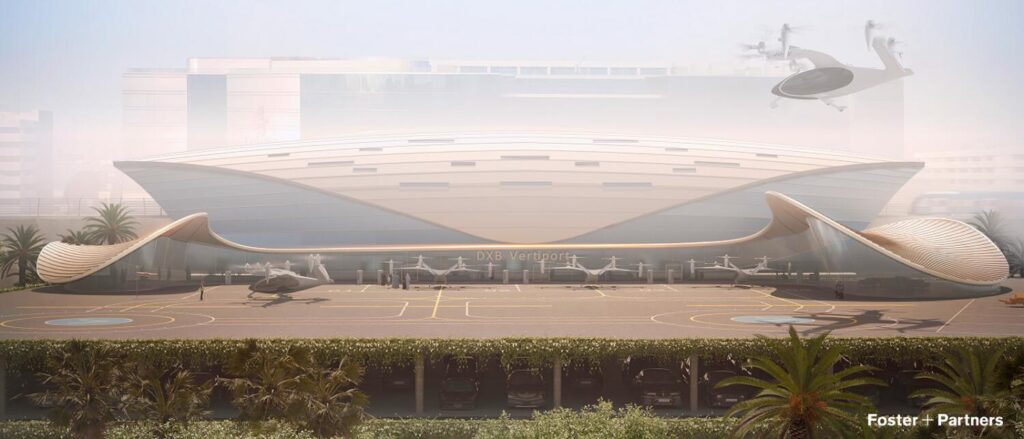
It will be connected to the Emirates Metro Station via an air-conditioned bridge. The port consists of two levels of car parking, boasting a contemporary design. It has four stands for aerial taxis and two landing areas. It will have a passenger waiting area and electric charging stations. These ports “seamlessly” integrate with other modes of transportation, according to the authorities.
The Aircraft
Unveiled at the World Government Summit, the aircraft is an electric vertical take-off and landing (eVTOL) vehicle.
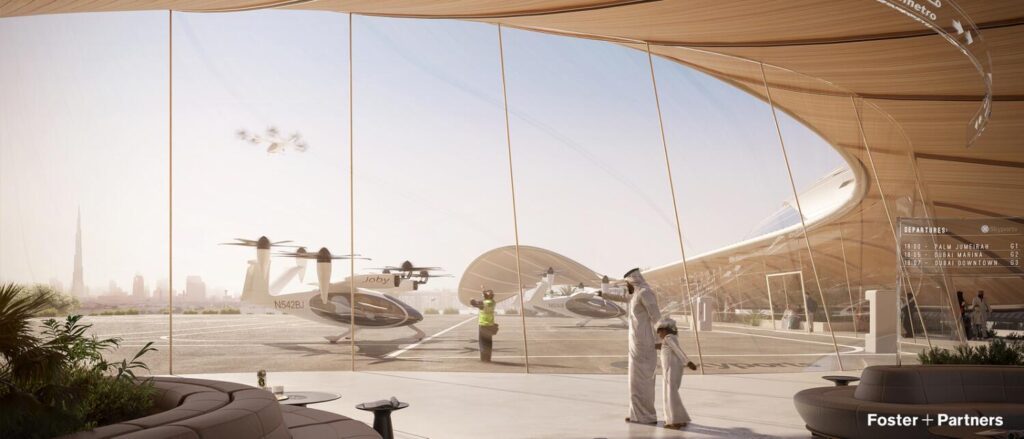
Powered by electricity, they don’t emit any pollutants. With a range of 241km, they can hit top speeds of 300kmph. The aerial taxi can accommodate up to four passengers plus a pilot.
The Sights
The Roads and Transport Authority (RTA) released images showing the aircraft whizzing past landmarks like the Burj Khalifa, Dubai Frame and Burj Al Arab. Imagine being a passenger as your aircraft hovers around these sights:
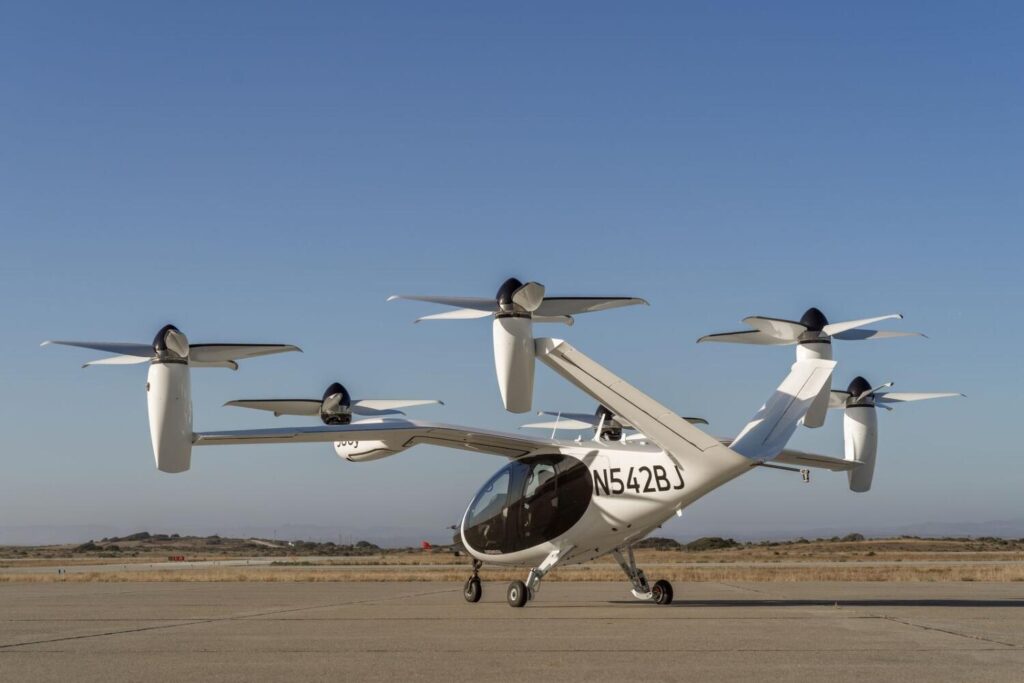
The RTA is working closely with the Dubai Civil Aviation Authority, General Civil Aviation Authority and Dubai Air Navigation Services to create a one-of-a-kind comprehensive framework for the operation of air taxis. This includes the development of legislation and setting clear specifications and standards for vehicle operators. The RTA will outline the flight paths for the vehicles, identify take-off and landing sites, and specify the necessary equipment for safe and efficient operations.
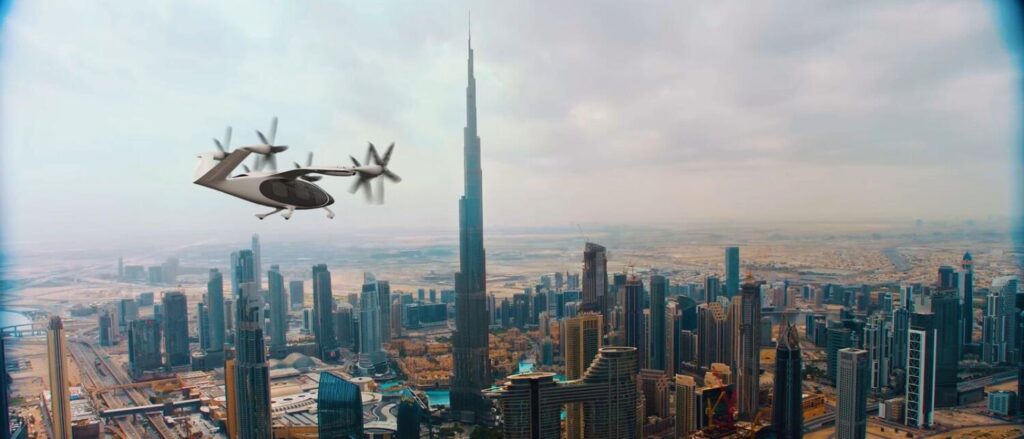
Mattar Al Tayer, Director-General and Chairman of the Board of Executive Directors of the RTA, said the project consists of two main stages: Selecting the suitable technologies that meet global standards and forming a partnership with a specialist provider.
@2022 Hostpot In Dubai. All Right Reserved
